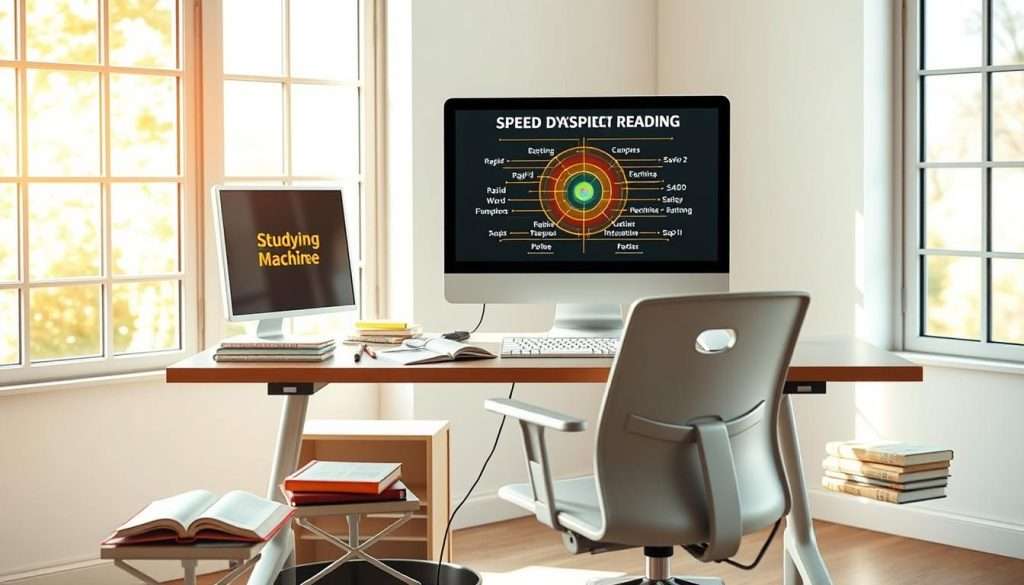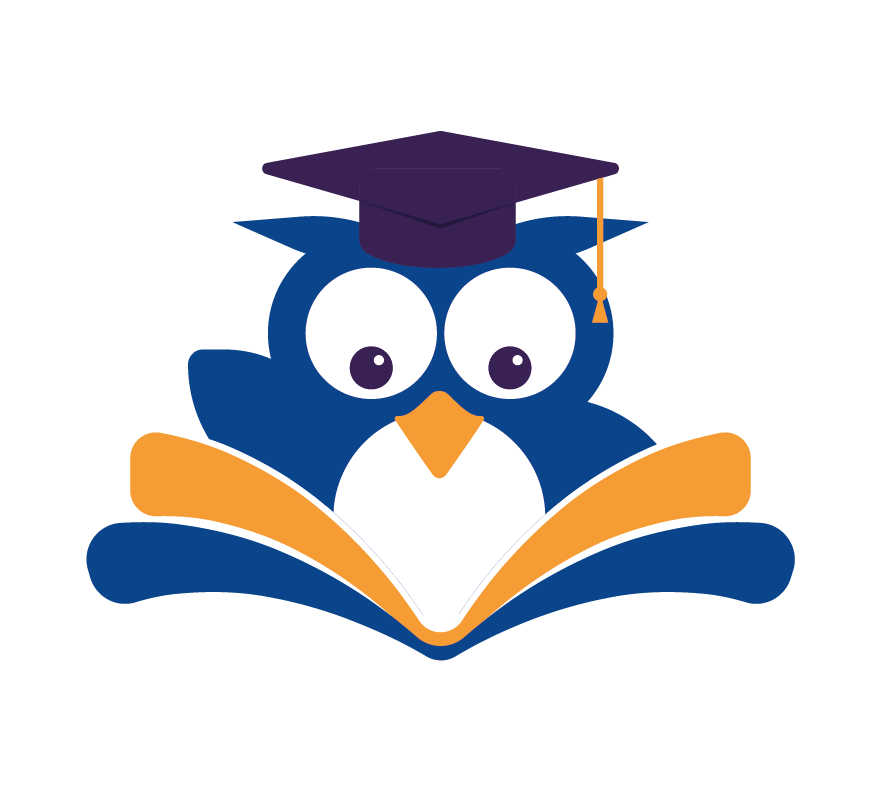Are you ready to improve your reading skills and unlock a world of knowledge? Reading is a key skill that opens doors to new ideas, creativity, and personal growth. By learning to read more effectively, you can absorb information better, expand your vocabulary, and enhance your learning experience.
We’ll explore the art of effective reading together, sharing practical tips and strategies. Whether you’re a student aiming to ace exams or a lifelong learner looking to expand your horizons, we’re here to guide you. We’ll help you every step of the way.
Key Takeaways
- Discover how to boost your reading comprehension
- Learn techniques to read more efficiently
- Understand the importance of active reading
- Explore strategies to improve your reading retention
- Develop a personalized reading plan to suit your needs
The Science Behind Effective Reading
Effective reading starts with how our brains handle written words. Our brains don’t just see words; they make sense of them. They connect what we read to what we already know.
How Your Brain Processes Written Information
Reading is a complex task for our brains. It uses visual, auditory, and memory skills to understand text. Knowing this helps us find better ways to read and remember.
The Cognitive Benefits of Regular Reading
Reading regularly boosts our brain power. It improves memory, focus, and thinking skills. It also lowers stress and builds empathy by showing us new views and experiences. Adding reading to our daily life can make us happier and smarter.
Understanding Reading Fluency and Comprehension
Reading fluently means reading smoothly and correctly. Comprehension is about getting the text’s meaning. To better understand what we read, we need to work on both fluency and comprehension. This includes active reading and making summaries.
Assessing Your Current Reading Habits
Let’s take a closer look at your reading habits to uncover strengths and weaknesses. Understanding how you currently read is crucial for making meaningful improvements.
Identifying Your Reading Strengths and Weaknesses
To assess your reading habits effectively, start by identifying what you’re good at and where you struggle. Are you a slow reader or do you tend to skim over texts? Do you find it hard to focus or get distracted easily? Active reading methods can help you overcome these challenges.
Common Reading Obstacles and How to Overcome Them
Many readers face common obstacles such as distractions, lack of focus, or difficulty understanding complex texts. To overcome these, try implementing reading fluency tips like setting a dedicated reading time and place, or using tools that help you stay focused.
| Reading Obstacle | Solution |
|---|---|
| Distractions | Designate a quiet reading space |
| Lack of Focus | Use active reading techniques like summarizing |
| Difficulty Understanding | Take notes and ask questions |
Setting Realistic Reading Goals
Once you’ve identified your strengths and weaknesses, it’s time to set realistic reading goals. Whether it’s increasing your reading speed or improving comprehension, having clear goals will help you stay motivated. Consider using a reading log to track your progress!
Creating the Optimal Reading Environment
Creating the perfect reading environment is key for effective reading habits. A messy and noisy place can really slow you down. To get the most out of your reading, you need a space free from distractions.
Physical Setup for Distraction-Free Reading
First, pick a quiet, comfy spot for reading. Make sure it’s well-lit and the temperature is just right. An ergonomic chair can also improve your reading comfort.
Digital Tools and Apps to Enhance Focus
Use digital tools and apps to stay focused. Tools like Freedom or SelfControl block online distractions. Apps like Focus@Will or Noisli offer background sounds that help you concentrate.
Managing External and Internal Distractions
To avoid outside distractions, turn off your phone’s notifications and tell others you’re reading. For inside distractions, try mindfulness or meditation to calm your mind.
How to Read More Effectively: Core Techniques
Effective reading is more than just speed. It’s about reading smarter with techniques like SQ3R. We’ll show you how to engage with what you read.
The SQ3R Method: Survey, Question, Read, Recite, Review
The SQ3R method boosts your reading skills. It has five steps:
- Survey: Look at headings and subheadings to get the structure.
- Question: Turn headings into questions to guide your reading.
- Read: Search for answers to your questions as you read.
- Recite: Summarize your answers out loud.
- Review: Review the section again to solidify your understanding.
This method keeps you engaged and helps you remember more.
Active Reading Strategies for Better Retention
Active reading is more than just scanning the text. It’s about being involved and interactive. Techniques include:
- Highlighting key points.
- Writing notes in the margins or in a separate notebook.
- Asking yourself questions about the material.

Previewing and Skimming Techniques
Previewing and skimming are great for getting a feel for the material before you start. Previewing means looking at headings, subheadings, and summaries. Skimming is about quickly scanning the text to find the main points. These methods help you grasp the structure and key ideas, making reading easier.
By using these techniques, you’ll read more efficiently and remember more. It’s not just about reading faster; it’s about reading smarter.
Speed Reading: Myths and Realities
Speed reading is often misunderstood. Many think it’s just about reading fast. But it’s more than that. It’s about reading quickly and understanding what you read.
Common Misconceptions About Speed Reading
One big myth is that speed reading means you won’t understand what you read. But that’s not true. Good speed reading techniques let you read fast and still get the point.
Another myth is that some people are naturally better at speed reading. While it’s true some might pick it up faster, it’s a skill you can learn with practice.
Practical Speed Reading Techniques That Actually Work
Here are some techniques to improve your reading speed without losing understanding:
- Previewing: Look at headings, subheadings, and bullet points to understand the structure and main points.
- Using Your Peripheral Vision: Read in groups of words instead of focusing on each word.
- Eliminating Subvocalization: Try to read without saying the words in your head, as this can slow you down.
When to Slow Down vs. When to Speed Up
Not all texts should be read at the same speed. For complex or technical texts, slow down to understand better. For simpler or more familiar texts, you can read faster.
| Reading Speed | Material Type | Comprehension Level |
|---|---|---|
| Slow | Technical, Complex | High |
| Medium | General Knowledge | Medium |
| Fast | Simple, Familiar | Low to Medium |
Knowing when to read fast or slow helps you read better. It improves your critical reading skills.
Developing Critical Reading Skills
Reading is more than just understanding the text. It’s about critically evaluating it. You need to analyze the information, question its validity, and connect it to other texts or experiences.
Analytical Approaches to Different Text Types
Each text type needs a unique analytical approach. For example, scientific articles focus on methodology and data analysis. Literary works, on the other hand, delve into themes, character development, and symbolism.

Questioning and Evaluating What You Read
To critically read, you must question the text. Ask yourself: What’s the author’s purpose? What biases might they have? What evidence do they provide for their claims? This helps you see the text’s strengths and weaknesses.
“The art of reading is not just about gliding through words on a page; it’s about engaging with the material, questioning it, and making it your own.”
Making Meaningful Connections Between Texts
Connecting different texts or your own experiences can deepen your understanding. For instance, you might compare themes in novels or link historical events to current affairs.
| Text Type | Analytical Focus | Questions to Ask |
|---|---|---|
| Scientific Article | Methodology, Data Analysis | Is the methodology sound? Are the conclusions supported by the data? |
| Literary Work | Themes, Character Development | What themes are explored? How do the characters evolve? |
By using these critical reading strategies, you can improve your reading skills and get more from what you read.
Enhancing Reading Comprehension
Improving your reading skills is more than just speed. It’s about understanding and keeping the information. Use active reading methods to dive deeper into what you read.
Visualization Techniques for Better Understanding
Visualization can greatly improve your comprehension. By imagining what you’re reading about, you’ll remember it better. For example, when reading a historical novel, try to picture the scenes and characters.
Note-Taking Methods That Improve Retention
Note-taking is key to better understanding. It keeps you focused and helps you remember more.
Cornell Note-Taking System
The Cornell Note-Taking System is a great method. It divides your paper into two parts. The smaller side is for keywords and questions, and the larger side is for notes. This method helps you engage more with the material and makes reviewing easier.
Mind Mapping for Visual Learners
Mind mapping is a visual way to connect ideas. It’s perfect for those who learn better through pictures. It helps organize information in a way that’s easy to remember.
| Method | Description | Benefit |
|---|---|---|
| Cornell Note-Taking | Divides paper into two columns for notes and keywords/questions | Enhances review and retention |
| Mind Mapping | Creates a visual diagram to connect ideas | Organizes information for visual learners |
Summarizing and Paraphrasing for Deeper Processing
Summarizing and paraphrasing are great for improving your understanding. By rewriting information in your own words, you ensure you get it and can recall it easily.
“The art of reading is not just about reading fast or slow, it’s about understanding and making connections.”
By using these strategies, you can greatly improve your reading skills. Try different methods to see what works best for you!
Advanced Reading Strategies for Different Materials
Reading is not the same for every text. You need different strategies for each type. Whether it’s school books, stories, or online content, changing your approach is key.
Approaching Academic and Technical Texts
For school or technical texts, start by previewing the material. Look at headings, subheadings, and summaries. This helps you understand the main points and structure.
Techniques for Fiction vs. Non-Fiction Reading
Fiction and non-fiction need different reading styles. With fiction, focus on characters, plot, and themes. For non-fiction, look at the author’s argument, key evidence, and how it connects to what you already know.
Digital Reading vs. Print Reading Strategies
Digital texts require more active reading, using links and notes. Print texts offer a hands-on experience, like highlighting and margin notes. Knowing these differences can make you a better reader.
Tackling Difficult or Complex Texts
When texts are hard, break them into smaller parts. Don’t be afraid to look up words or ideas you don’t get. Summarizing sections as you read can also help you understand and remember better.
Using these advanced strategies can make you a better reader. The most important thing is to be flexible and adjust your method as needed.
Measuring and Tracking Your Reading Progress
Learning to track your reading progress is essential to reach your full reading potential. As you use different speed reading techniques, seeing your growth can really motivate you.
Tools for Monitoring Reading Speed and Comprehension
To track your progress, you need tools that measure your speed and understanding. Many apps and software are out there, offering timed tests and quizzes to check your grasp.
Setting Benchmarks and Celebrating Improvements
It’s important to set realistic goals for tracking your progress. Begin with a baseline for your speed and understanding. Then, aim for improvements you can reach. Celebrate your wins to keep your motivation high.
Adjusting Your Strategies Based on Performance
Tracking your progress helps you see where you need to get better. Use this insight to tweak your reading methods. Focus on techniques that make you read faster and better. By refining your approach, you’ll hit your reading targets and become more skilled.
Conclusion: Your Journey to Reading Mastery
Reading well is a journey that never ends. It takes practice, patience, and never giving up. Learning to read better is key to enjoying books more and understanding them deeply.
By using the tips from this article, you’re getting closer to being a great reader. The secret to success is regular practice and being open to new ways of reading.
Keep working towards your reading goals. With effort and time, you’ll not only read better but also love books more.
So, keep reading, stay curious, and watch your reading skills flourish!

